
 |
HOME |
An Apiarist's Bees |
||||
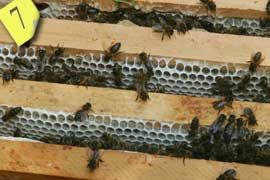 Here you can clearly see the healthy comb at an advanced stage but as yet uncapped. Each frame will hold approximately 1000 comb cells and can yield 3 lbs of honey. Although the hives we examined hadn't yet reached an advanced honey production stage being early spring, you'll see an example of capped comb later as we explore the Brood Box. |
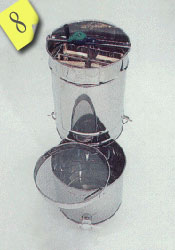 Frames full of capped combs will be placed into a Honey Extractor in order to harvest the honey. These range in size and can be powered manually or electrically. The honey is spun from the comb by rapid rotation. |
||||
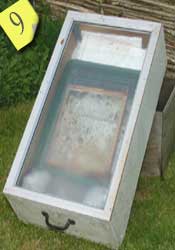 Honey can also be extracted by using a solar extractor. The honeycomb frame is placed inside the glass lidded box which is positioned towards the sun and left. The honey and wax melts and passes through a mesh sieve to remove impurities. Once in the collecting container the wax separates and floats on the surface of the honey. |
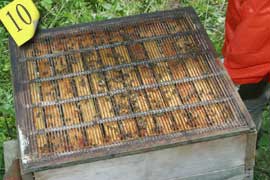 Having removed the upper Super Boxes and examined the honeycomb in the frames, Don now reaches the Queen Excluder resting on top of the bottommost Brood Box. It is in this box that the queen produces all of her bees and this is kept separate by the bees from the honey storage areas. The apiarist wants to keep the queen from wandering up into the honey Super Boxes. She needs to stay where she's needed most in order to maintain an efficient and productive hive. |
||||
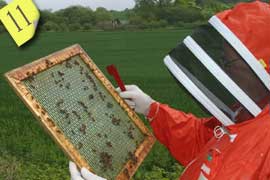 Don starts the process of looking at the general condition of the bees in the Brood. He'll also check to see if there is more than a single queen resident, and if the queen is on the excluder he'll tap her back down into the Brood Box to discourage her from leaving the hive. |
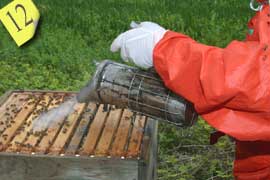 A gentle smoking calms the bees and encourages them down into the Brood. It is at this point that the bees are likely to be in their most aggressive mood as they'll instinctively want to protect the Brood and the queen. It is thought that the smoke calms them because fearing fire they will see as priority the need to start evacuating the Brood rather than losing time to attack predators. |
||||
| NEXT | |||||
| Suggest a topic for another Wey River photo-essay |
|||||